There are quite a few cheaper alternatives to Canon Speedlite 430EX II flash on the market today. In this review, we compare this flash to Nissin Di622 Mark II. While these flash guns have a number of matching characteristics, they are quite different, so knowing the differences is important if you are trying to choose between these two mid-range flashes.
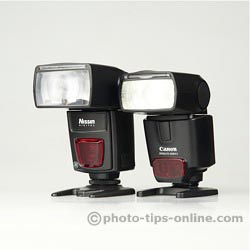 |
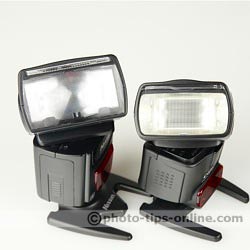 |
One of the first things to look at when comparing flashes is maximum light output. According to the specifications, Nissin Di622 Mark II is slightly more powerful sporting a Guide Number of 44 compared to 43 of the Canon unit. In our tests, Di622 delivered a tad more light, but we'd rather say the flashes are virtually equal in power.
Another important aspect is how fast a flash can recharge after firing. With a set of freshly charged Ni-MH batteries, both Canon and Nissin flashes demonstrated very similar performance being able to recycle in about 3 seconds after a full power pop.
Also, please note that Canon 430EX II operates absolutely silently (which includes recycling, as well). Nissin Di622 Mark II produces a distinct "whining" sound typical for flashes of older generations. Once the capacitors inside the Nissin unit are fully charged, the flash becomes almost silent (but you can still hear some very quiet electronic buzzing). We don't prefer either way. The quiet operation can be valuable in some situation (like, for example, shooting in a church). The recycling "whine", on the other hand, provides you with an audible feedback about the flash readiness for the next fire.
Both flashes are well-built. Canon Speedlite 430EX II feels a bit more sturdy, but Nissin Di622 Mark II does not feel cheap, too, and it is a very good quality unit.
Di622 Mark II is significantly bigger. It has larger body and head, so it is not as compact and portable as the Canon unit. Despite the size difference, however, the two flashes are nearly identical in weight (around 320 g / 11.3 oz).
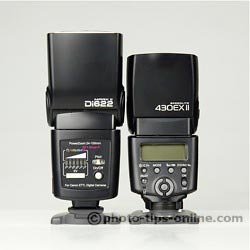 |
Canon 430EX II features an LCD screen with a fairly complex menu, whereas Nissin opted for the simplistic operation and supplied its flash with just a number of LED's.
Nissin Di622 II has an "older" style mounting foot and attachment. The foot is plastic, which potentially makes it less durable than the metal foot of the Canon unit. To secure the flash in a camera hot-shoe, Nissin went with the traditional screw-on design, whereas Speedlite 430EX II features a quick-release locking mechanism. As we mentioned in our Canon 430EX II review, we are not big fans of the Canon's release button, which we find rather uncomfortable to use. Additionally, we have to say that we really like the knob on the Nissin flash because it has a very nice feel (probably, due to the slightly rounded edges).
 |
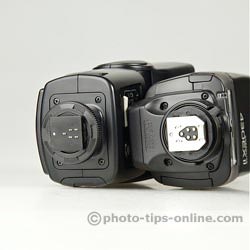 |
The battery compartment doors are also implemented differently, and we prefer the one found on the Canon flash because it is easier to open. The design of the Nissin's battery door is very similar to the one seen on Canon Speedlite 580EX (Mark I), which we don't really appreciate because it feels like it's easy to break it off. It is not a major issue but worth mentioning.
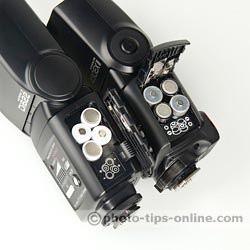 |
There are quite a few differences in how Nissin and Canon build the flash heads for their current mid-range units:
 |
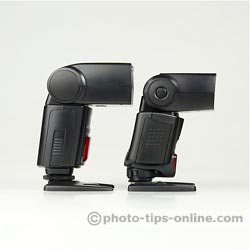 |
Because of its larger size, Nissin Di622 Mark II sits on a camera a little higher. This causes a slightly different frame coverage at wide angles. While both flashes exhibit different degree of vignetting depending on the zoom level, overall, Speedlite 430EX II is marginally better in filling the whole frame. Frame coverage is only important when firing the flash straight at the subject, which is just one of many flash techniques.
The two images below were taken with a full frame camera and 17mm lens with Canon 430EX II (left) and Nissin Di622 Mark II (right) set to 24mm.
 |
 |
In addition, Di622 II does not lock in the vertical head position as good as 430EX II flash, which makes it hard (if not impossible) to use some of the third-party flash light modifiers. This is only true for on-camera flash applications and only for really heavy light accessories such as, for example, Gary Fong Lightsphere or Rogue Large FlashBender.
Both flashes can be used as wireless slaves and controlled remotely by a Canon-compatible master flash or controller. However, the significant advantage of 430EX II is that it supports all 3 of the Canon's wireless groups and all 4 channels, whereas Di622 Mark II always belongs to Group A Channel 1 (which is marked on its body for reference). This can be a significant limitation for in some scenarios.
Besides the dedicated Canon wireless operations, Nissin Di622 Mark II also offers two other wireless modes, which are described in Unique features: Di622 Mark II.
Also, both units performed very well in our tests with PocketWizard FlexTT5 radio triggers.
So far, we mentioned mostly the features found on both flashes, and how they differ in one way or another. Canon Speedlite 430EX II, however, has a number of functions that are completely missing on Nissin Di622 Mark II:
These features can be critical for some photographers, but for us, the most significant advantage of 430EX II is the high-speed sync capability.
Nissin Di622 Mark II, in-turn, has some useful features that 430EX II lacks:
We really like the additional slave modes of the Nissin flash. The ability to mix this flash into various lighting setups is quite handy.
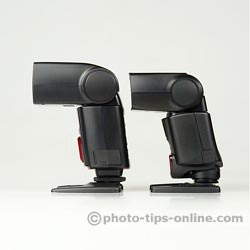 |
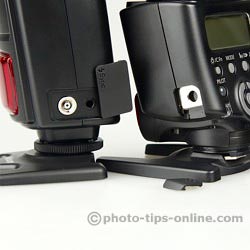 |
Due to its reduced number of features, Nissin Di622 Mark II has a lesser number of controls and no LCD screen. As a result, it is easier to operate compared to the Canon flash. To power the unit off, however, you have to press and hold the On/Off button, which we dislike.
Speedlite 430EX II has a more advanced set of controls that may require some getting used to, but we believe the menus are fairly intuitive. Also, we have to say that we are not big fans of the buttons found on this flash: you have to press them too deep to operate.
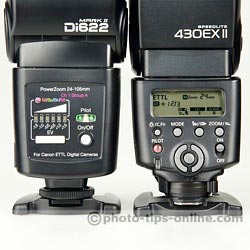 |
Both flashes can be controlled via in-camera menus with compatible DSLR bodies. The flash mode on the Nissin unit, however, can only be changed on the flash and not in the camera.
The flash exposure compensation (FEC) value on Canon 430EX II can be set either via on-flash or in-camera menu with up to 3 f-stops in both direction with 1/3-stop increments. The changes are automatically reflected in both menus.
Nissin Di622 Mark II is unusual with regards to flash exposure compensation. When set on the flash, FEC is limited to 1.5-stops each direction with 1/2-stop increments. The in-camera FEC value, however, is not synchronized with the flash one but combined with it, instead. On one hand, it increases the compensation range, but on the other hand, you don't know the real FEC value unless you are looking at both in-camera flash control menu and flash LED's.
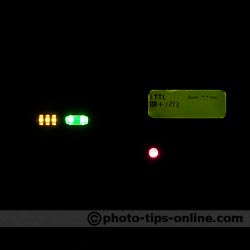 |
AF-assist is another nice feature that both flashes have, but 430EX II delivers the range of 0.7 - 10 m (2.3 - 32.8 ft), while Di622 Mark II is limited to 0.7 - 6 m (2.3 - 19.7 ft).
Both flashes come with a mini-stand and a pouch. The Canon pouch provides some padding and, therefore, better protection. It also has a dedicated pocket for the stand.
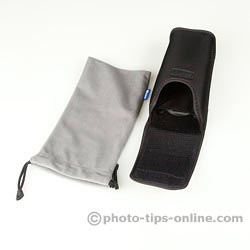 |
The included flash stands are nearly identical, but the Nissin's stand has a metal thread on the bottom, which provides more durability if you use these kind of stands to mound your flashes onto a tripod or a light stand. The Canon's mini-stand is all plastic.
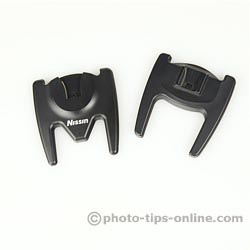 |
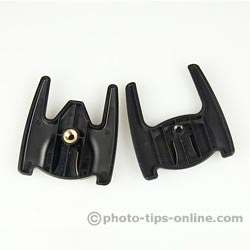 |
Nissin Di622 Mark II is a good alternative to Canon Speedlite 430EX II. While it lacks some of the more advanced features, like flash bracketing, modeling light, sensor size detection, and some others, it is as powerful as the Canon counterpart, and it recycles at the same rate. Both flashes are well-built and they are good performers overall. For us, it really comes down to weighing high-speed sync and full support of the Canon wireless system vs. additional optical slave modes and sync ports. If you favor the first two, Canon 430EX II might be the way to go. Otherwise, Nissin Di622 Mark II is a great choice, especially considering that it is typically 30-35% cheaper.